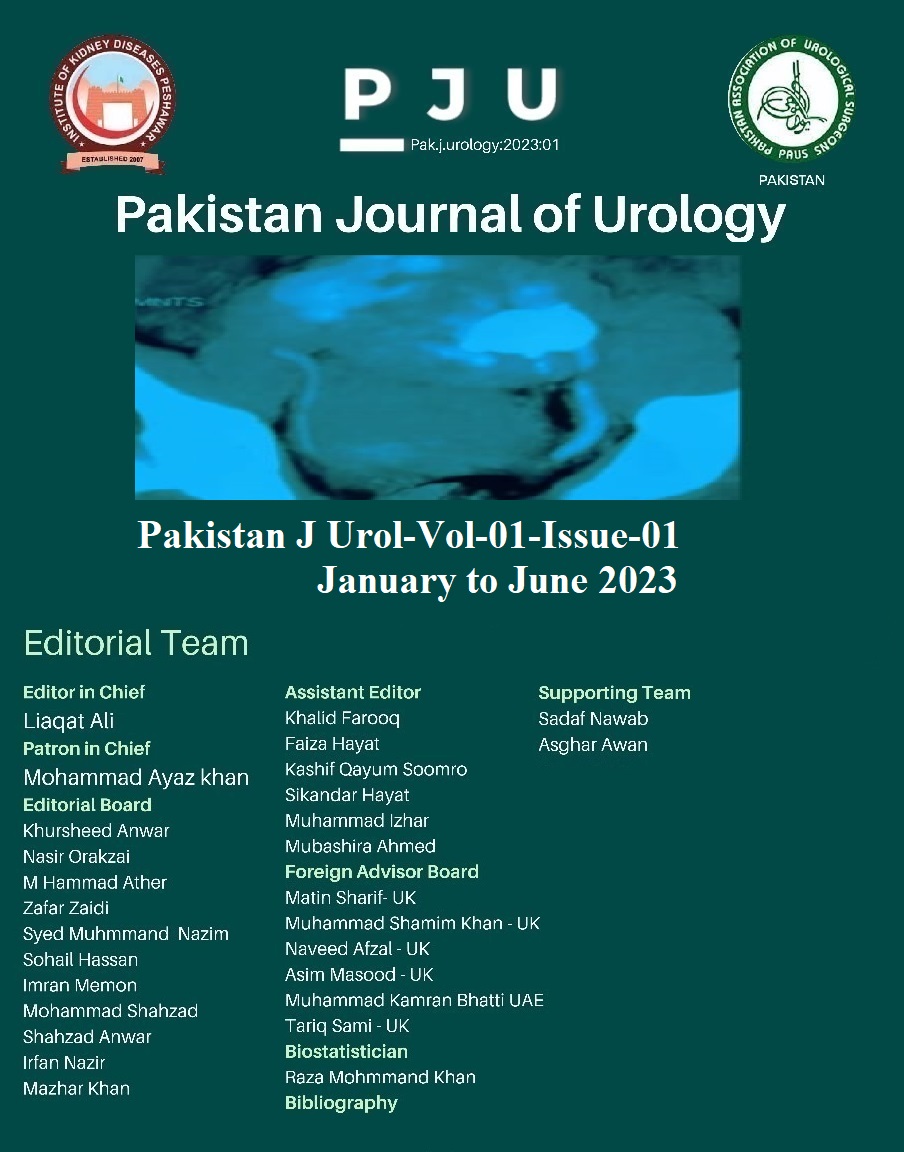Mini-Percutaneous Versus Standard Nephrolithotomy Comparison For Staghorn Stones
A Randomized Controlled Trial (RCT)
DOI:
https://doi.org/10.69885/pju.v1i01.18Keywords:
Staghorn stones, percutaneous nephrolithotomy, stone-free rate, surgery, hospital stay, complications, postoperative painAbstract
Background: The treatment for staghorn stones is known as mini-percutaneous nephrolithotomy (mini-PNL), which is a minimally invasive surgical procedure. Despite its shorter duration, reduced morbidity, and lower blood loss when compared to standard nephrolithotomy, it may offer similar results and to compare the safety and efficacy of mini-PNL versus conventional nephrolithotomy for the treatment of staghorn stones.
Objectives: To evaluate the clinical effectiveness (stone-free rate and complication rate) and safety (time to stone clearance, perioperative and postoperative morbidity, hospital stay, and blood loss) of mini-percutaneous nephrolithotomy (PNL) in comparison to standard nephrolithotomy for the management of staghorn stones.
Study design: A Randomized Controlled Trial
Duration and place of study: Department of Urology Sahiwal Teaching Hospital Sahiwal from January 2021 to August 2021
Methodology: We performed a randomized controlled experiment from January 2021 to August 2021 at the Department of Urology, Sahiwal Teaching Hospital, Sahiwal, to ascertain the stone-free rate among patients with staghorn stones. Two years were dedicated to the study. A total of seventy-five patients were split into two groups for the regular PCNL and mini-PCNL procedures during the study. In this study, In this study, one of these procedures was randomly assigned to each patient-- half received traditional PCNL and half had mini-PCNL surgery. Data were gathered for hospital stays, complications and pain during filming. Eighty-one patients participated in the research, ranging in Age from 20 to 90 years old.
Results: The mean Age was 53, 02 years old. There were 78 men and 13 women among these subjects taken as 'normal' statistics. In the mini perc and regular PCNL groups, the success rates were 91.2% and 96.8%, respectively (p=0.05). The mean operating time and duration of hospital stay in the mini-PCNL group were significantly shorter than those in the standard group (81.1±3.3 and 03.3 days, respectively; t=3.728,5), p=0.001. Compared with regular PCNL, mini-PCNL has a higher rate of mum less thick stone (25% compared to 13%; p = 0.036)
Conclusion: the mini-PCNL group experienced far less postoperative discomfort (p-0.001). Therefore, minimally invasive PCNL emerges as a more effective treatment for staghorn stones. It offers a number of benefits compared to standard PCNL, such as reducing operating room time, shortening hospital stays and lower pain after surgery. As a result of these advantages, it has become increasingly favoured in practice for treating staghorn stones.
Keywords: Staghorn stones, PCNL, stone-free rate, hospital stay, complications, postoperative pain
Downloads
Published
How to Cite
Issue
Section
License
Copyright (c) 2023 Pakistan Journal of Urology (PJU)

This work is licensed under a Creative Commons Attribution 4.0 International License.


















